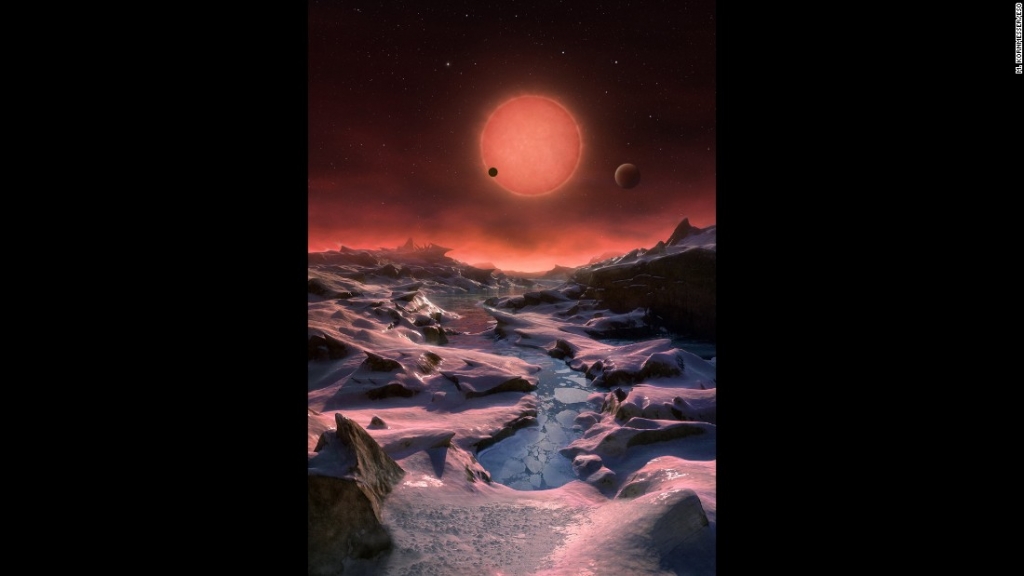-
Tips for becoming a good boxer - November 6, 2020
-
7 expert tips for making your hens night a memorable one - November 6, 2020
-
5 reasons to host your Christmas party on a cruise boat - November 6, 2020
-
What to do when you’re charged with a crime - November 6, 2020
-
Should you get one or multiple dogs? Here’s all you need to know - November 3, 2020
-
A Guide: How to Build Your Very Own Magic Mirror - February 14, 2019
-
Our Top Inspirational Baseball Stars - November 24, 2018
-
Five Tech Tools That Will Help You Turn Your Blog into a Business - November 24, 2018
-
How to Indulge on Vacation without Expanding Your Waist - November 9, 2018
-
5 Strategies for Businesses to Appeal to Today’s Increasingly Mobile-Crazed Customers - November 9, 2018
Extraterrestrial life could be 40 light-years away
But recently, a team of scientists chose to look for habitable exoplanets orbiting the supercool dwarf TRAPPIST-1; a small, dim star-the type of star that previous researchers thought couldn’t pull habitable planets into its orbit. The star is too faint to see in the night sky with the naked eye, or even through a large amateur telescope.
Advertisement
Over the past year, my colleagues on the TRAPPIST team have monitored several dozen ultracool dwarfs to search for the faint transit signals characteristic of an Earth-sized planet, a mere one percent dip in the already faint light they emit.
The group of global astronomers from MIT, NASA, the University California at San Diego, the University of Liège and other institutions made the discovery.
We’ve seen potentially habitable worlds in the past, but these three offer the best opportunity for study, says Gillon. This dim cold red star, now known as TRAPPIST-1, is located in the constellation of Aquarius about 39 light-years from Earth. But stars that are very cool and faint compared with the Sun are abundant throughout the galaxy. When starlight passes through a planet’s atmosphere, different fractions are absorbed based on the molecules present, resulting in a distinct spectra.
Short feature on the TRAPPIST-1 discovery.
“Thanks to several giant telescopes now under construction, including ESO’s E-ELT and the NASA/ESA/CSA James Webb Space Telescope due to launch for 2018, we will soon be able to study the atmospheric composition of these planets and to explore them first for water, then for traces of biological activity”. The small size of the star and its planets’ orbits means “the structure of this planetary system is much more similar in scale to the system of Jupiter’s moons than to that of the solar system”, Gillon said in the statement.
Since the planets are outside our solar system, they’re technically known as as exoplanets.
Observations from the Trappist telescope taken from September to December past year, and follow-up measurements from larger instruments, revealed three small planets orbiting very close to the star, at 1%, 1.5% and about 3% of the distance that Earth lies from the sun.
The study ream said it is still likely that they have habitable regions on their exterior, although details such as their clouds, and atmospheres-if they have atmospheres-make it hard to calculate if exterior conditions are really well suited for life. That could limit circulation of water and atmosphere, which might become trapped on the cold, dark side, although the astronomers speculate that life could exist in the perpetual dawn at the day side’s western edge.
“So if we want to find life elsewhere in the Universe, this is where we should start to look”, he said. This is the first time scientists have detected rocky planets in a system like this one, making the worlds great candidates for study.
He says the planets remind him of GJ 1214 b, a world about twice the size of Earth that scientists have been eager to probe.
Traveling to the TRAPPIST-1 system is out of the question-but we may be able to pick up signatures of life from afar, by scouring the atmospheres of these planets for chemicals like carbon dioxide, water vapor, and oxygen. Around 15 percent of the stars close to us are ultracool dwarf stars.
Advertisement
That’s not slang. The three newly discovered planets rotate around a star that’s cooler, smaller and dimmer than our sun. The strength of each planet’s gravitational pull will help scientists deduce its mass, which in turn will help them estimate the planets’ densities and, thus, compositions, he added. And the researchers have noted the three planets are prime targets for further atmospheric studies, including a biosignatures search. “But what we don’t know is whether these three elements are enough, or if life is some kind of cosmic accident”. “Many scientists, when young, read science fiction and get inspired to work in their chosen fields”.




























